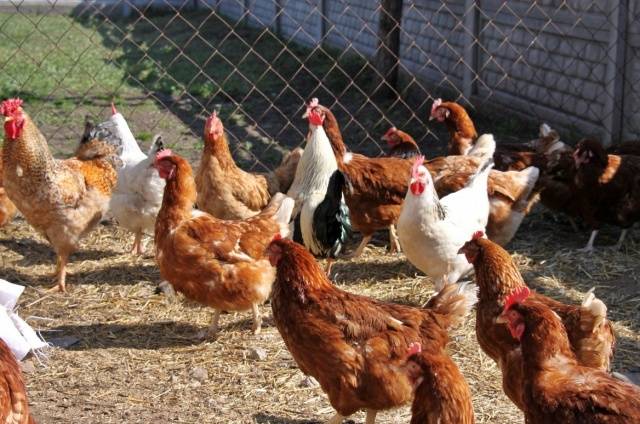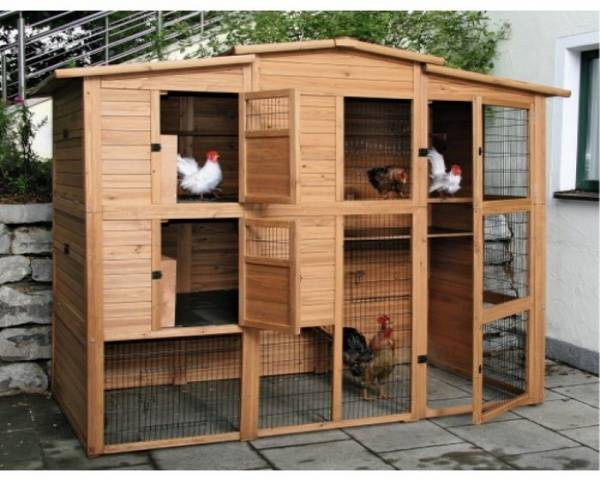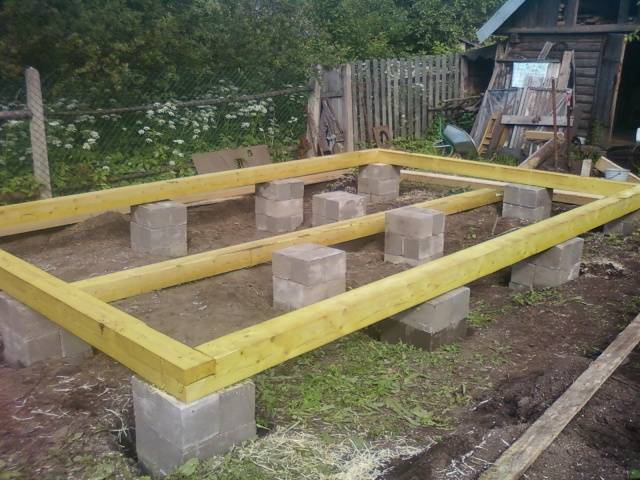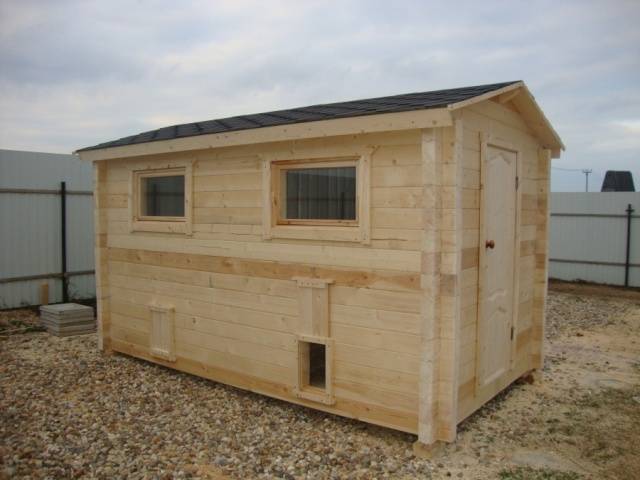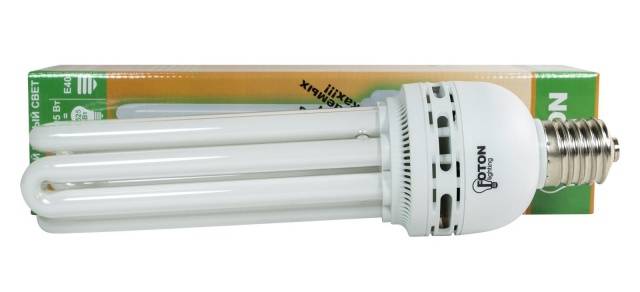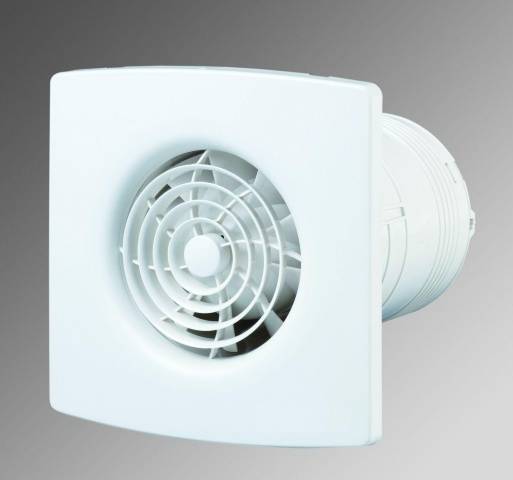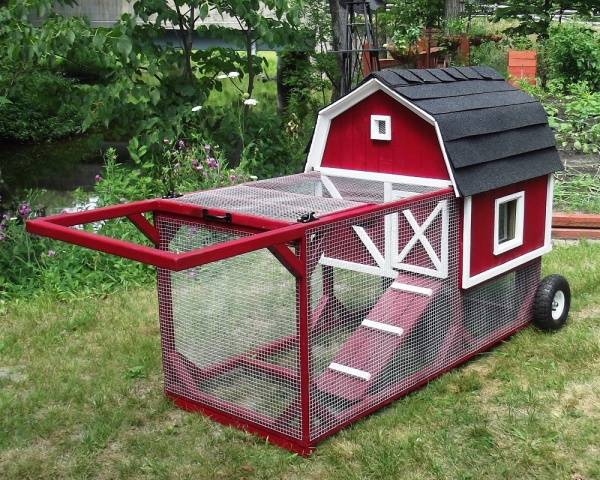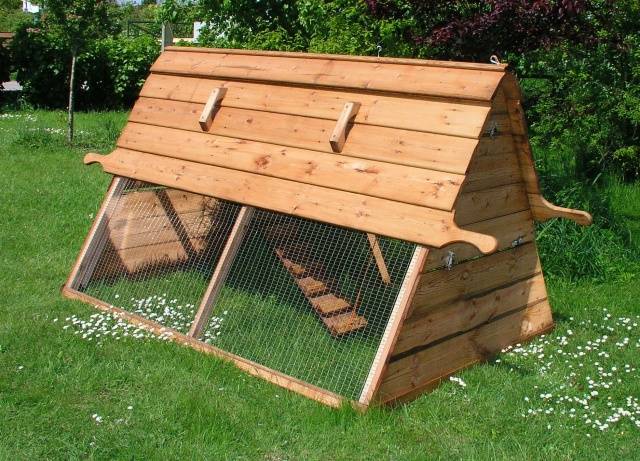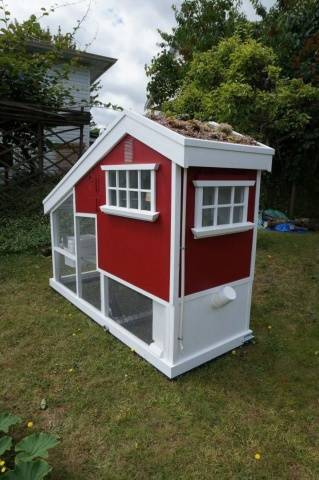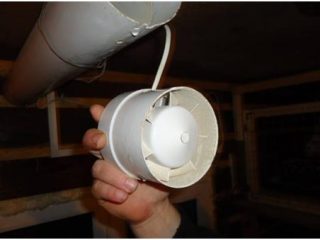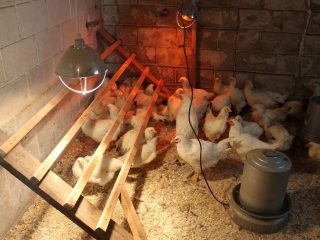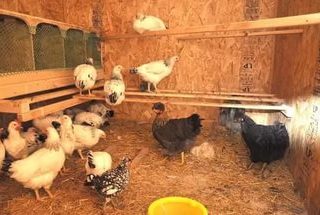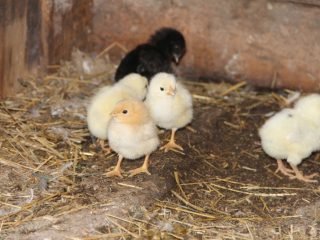Content
A chicken coop may be needed not only by farmers, but also by those who plan to keep chickens in their country house in the summer. The poultry house can be summer or winter, stationary or mobile, designed for different livestock. How to make a chicken coop from scrap materials, what can be used for this?
What can you build a chicken coop from?
A chicken coop can be built from a variety of available materials. It can be:
- boards,
- cinder blocks
- sandwich panels,
- beam,
- plywood,
- plastic.
You will also need concrete, mesh, and insulating materials. You can use boards that were left after dismantling another building, and any available materials, especially if this is a summer chicken coop for a summer residence.
Where to place the chicken coop
The location of the chicken coop affects the well-being and egg production of its inhabitants.
- It is best to build it on a hill so that there is no risk of flooding during heavy rain.
- The windows are located on the south side, thus increasing daylight hours, and, consequently, egg production, and the door is on the north or west side to protect the chickens from drafts.
- You should not place the poultry house near noise sources: chickens may become frightened and stressed, which will reduce the number of eggs.You can surround the chicken coop with a hedge.
Calculate the size
The size of a chicken coop made from scrap materials directly depends on the number of birds you plan to keep in it. The following points are also important:
- will there be an aviary in it,
- whether you will keep broilers or layers.
If you are going to have broilers, then they can be kept in cages, then they will need much less space. For free-roaming laying hens, you need a spacious house, possibly with an aviary. However, for a small flock there is no point in building a huge chicken coop.
- For 10 laying hens, a house with an area of 2-3 square meters is enough. m.
- For meat breeds, the chicken coop area is smaller - 1 square meter is enough for 10 chickens. m.
- The height of the chicken coop should be about 1.5 m, for broilers - 2 m, it can be higher, it is important that it is convenient to enter the house to care for the chickens and restore order.
Additionally, you can provide a storage room where you will store equipment.
How to build a chicken coop
First you need to prepare the base. It is even needed for summer chicken coop from scrap materials. The foundation keeps the floor dry and prevents rodents and other pests from entering the structure.
For a chicken coop, a columnar base can be recommended. In this case, there will be a distance between the floor and the ground, thus providing additional ventilation. Columnar foundations are made of brick or concrete blocks.
- First you need to level the site for the future building. The site is marked with rope and pegs so that the posts are level.
- Under the pillars, holes are dug approximately 0.4-0.5 wide at a distance of 1 m.
- Next, brick pillars are laid in the pits. To hold them together, you will need cement mortar.The height of the posts should be approximately 20 cm above the soil surface. Levelness is checked using a level. Ruberoid is laid in two layers on the finished posts.
- It takes 4-5 days for the solution to harden and the pillars to shrink. The posts are treated with bitumen, and the rest of the holes are filled with sand or gravel.
The next stage is the construction of the floor. To better protect the chicken coop from moisture, the floors are made of two layers. Insulation can be laid between the layers.
- A subfloor is laid on the foundation; any material is suitable for it.
- A frame is made of thick, even boards around the perimeter and attached to the foundation.
- For the finished floor, use smooth, good quality boards. They are attached to the frame with self-tapping screws.
The easiest way is to make a frame chicken coop from scrap materials. Wooden beams are used for the frame, and it can be sheathed with plywood or boards. For windows, openings are left in which a metal mesh is stretched. For small chicken coop It is enough to install the bars in the corners, which are connected at the top by horizontal jumpers. For a large structure, additional vertical posts at a distance of 0.5 m will be required.
The roof of the chicken coop is usually made of a gable roof, which allows rainwater to flow better from it. For such a roof, the rafters are first installed, then the sheathing is made (boards are laid across the rafters). One of the inexpensive roofing materials is roofing felt. You can use corrugated sheet or any other suitable material.
The chicken coop is ready, now we need to equip it from the inside. Sawdust is poured on the floor or straw is laid. Arrange feeders, drinking bowls, nests or cages for chickens, install perches, preferably in the form of a ladder, so that it is convenient for chickens to climb them.
You can also make nests in the form of shelves, arranging them in rows or in a checkerboard pattern. Drinkers and feeders in the chicken coop are installed on a hill.
Winter option
If you intend to keep chickens all year round, you will need one all-season chicken coop or two: one for winter and one for summer. The winter chicken coop should be small in size (about half the size of the summer one). 1 square meter is enough for him. m for 4 chickens. In cold weather, birds try to huddle together rather than wander around the area, so this area is quite enough. A small chicken coop made from scrap materials is also easier to heat.
The walls of the chicken coop should be thick. The plywood option will not work; you need to use other materials:
- brick,
- adobe,
- boards,
- foam blocks.
It needs good thermal insulation and lighting, since the length of daylight hours affects the egg production of chickens.
It is especially important to insulate the roof well. Usually it is made multi-layered, alternating layers of roofing felt and wood chips. The roof can also be covered with reeds, slate, or tiles. To insulate the ceiling, an additional layer of chipboard is laid.
First, ceiling beams are laid at a distance of approximately 0.8 m, providing space for ventilation ducts. Then boards are laid on top of the beams and insulation (sawdust or mineral wool) is laid. Next, the rafters are installed and the roofing material is laid.
Lighting
In the chicken coop you need to combine natural and artificial lighting. The color of the lamps also affects the condition of the chickens. For example, blue calms, green helps young animals grow better, orange promotes active reproduction, red reduces the desire of birds to pluck themselves, but also reduces egg production.
It is better to take lamps:
- fluorescent - one 60 W lamp per 6 sq.m.,
- fluorescent - the flickering frequency must be above 26 thousand Hz,
- sodium
Ventilation
Another necessary detail of a winter chicken coop is ventilation. If in a summer building made from scrap materials this function is performed by windows and doors, then for a winter building it is necessary to think about a good ventilation system that would provide the chickens with fresh air and not blow out all the heat.
The simplest option is a ventilation window, which is located above the door, natural ventilation. The disadvantage of such a system is that a lot of heat escapes through the window, and the cost of heating the chicken coop increases significantly.
Supply and exhaust ventilation retains heat better. To install it, holes are made in the roof of the poultry house and pipes of different lengths are inserted into them. One pipe should rise above the roof by 35-40 cm, and the other by 1.5 m. Due to the difference in heights, fresh air will flow through the shorter pipe, and the longer one will serve as an exhaust hood. The pipes are covered with special umbrellas to prevent precipitation and debris from getting inside.
You can also install a fan in one or both pipes. It is turned on manually or sensors are also installed that start ventilation at a certain temperature.
Perches and nests are also made from the inside of the winter chicken coop; in addition, a swimming pool is needed.It is a box with a 10-centimeter layer of sand mixed with sulfur and ash. Chickens will bathe in it and clean themselves of parasites.
Portable mini poultry house
For a summer residence, a small portable mini-poultry house made from scrap materials may be sufficient. This may be a small structure with handles that can be moved by two people, or an option on wheels. You can use an old car, stroller, or even a car as a platform for it.
Portable chicken coop made from scrap materials has many advantages.
- Every time he ends up on clean grass, thanks to which the chickens are not close to their feces and get sick less, they have fewer parasites.
- On fresh grass, chickens can find food in the form of larvae and bugs.
- Such a chicken coop can serve as a decoration for the site; it looks unusual.
- Easier to clean, you can move it closer to a water source and simply water it with a hose.
- A portable chicken coop can be either winter or summer. The all-season option can be moved closer to home for the winter.
- Due to their small size, they are inexpensive; you can make a chicken coop with your own hands from scrap materials.
Of course, there are also disadvantages:
- A portable chicken coop is limited in size.
- if you make it insufficiently strong, all the advantages of mobility are leveled out.
A chicken coop made from scrap materials can have a triangular shape, part of it will be closed, and part of it will be open.
The dimensions of the chicken coop are 120 * 120 * 100 cm. Moreover, it will even be two-story. On the ground floor there is a small enclosure for walking, and on the second floor there is a nest and a resting place with a perch. The floors are connected by a ladder.
First, make 2 triangular frames from bars and connect them at the middle of the height using boards, which will also act as handles for carrying the chicken coop. Next, in the lower part of the chicken coop, walls are made of wire mesh with a mesh size of 2 * 2 cm. One of the end walls of the first floor is also made of mesh, and it must be removable - through it you can get into the chicken coop. The upper part is made of lining or boards. The second wall is also made entirely of boards or lining. The frame for the mesh is made of wooden slats.
Plywood is suitable for the floor of the second floor of the chicken coop. So that the chickens can go down and up, a hole measuring 20*40 cm is made in it. A small wooden ladder is installed in the opening. The second floor is divided approximately in a ratio of 1:3 and a nest is made in the smaller part, and a perch in the larger part.
The roof of the second floor is made on hinges so that it can be opened. It is convenient to divide it into two parts vertically.
Perches and nests
In order for chickens to lay eggs well, it is necessary to properly arrange nests and roosts for them. The perches in the chicken coop are placed at a height of at least 0.5 m from the floor, making them durable and not sagging. There should also be at least 0.5 m between the perches. If the chicken coop does not have an aviary, then perches are made in it so that the chickens spend more time in the fresh air in the summer.
It is best to make nests and perches in a chicken coop removable. Roofs are placed over the nests - this not only creates more comfortable conditions for laying hens, which do not like bright light during the egg-laying period, but will also help keep the nests clean longer. Clean straw is placed in the nests and changed regularly. Hay is not used because it quickly begins to rot, which is dangerous for the health of the bird.
Conclusion
Building a chicken coop in a country house or in the courtyard of a private house is not such a difficult task. It is important to follow some recommendations that will help make the poultry house comfortable and safe for its inhabitants. A variety of materials can be used for construction.
